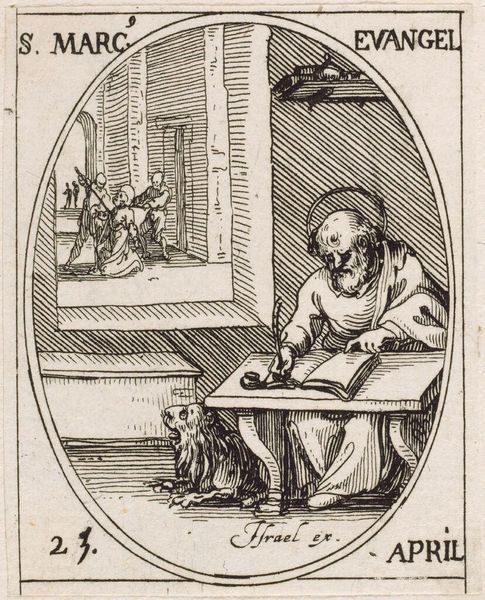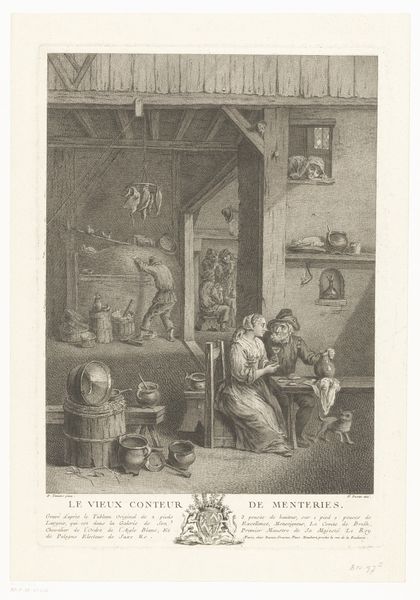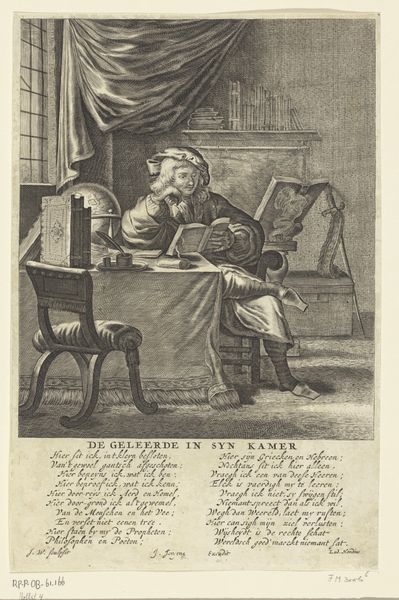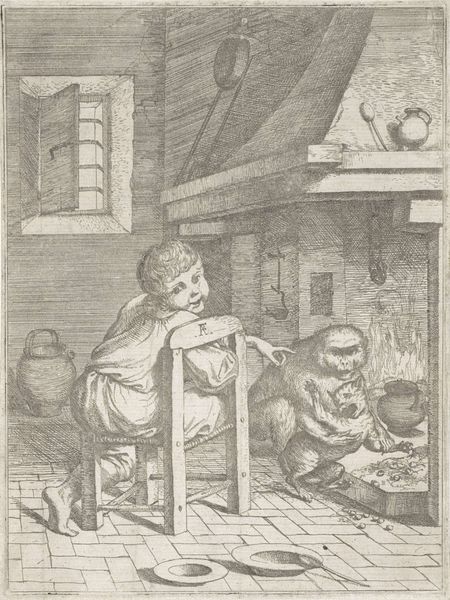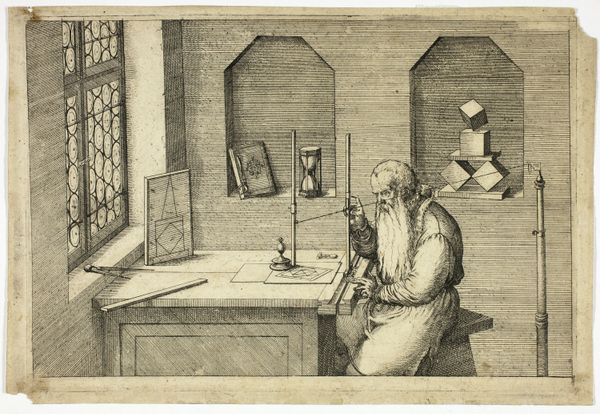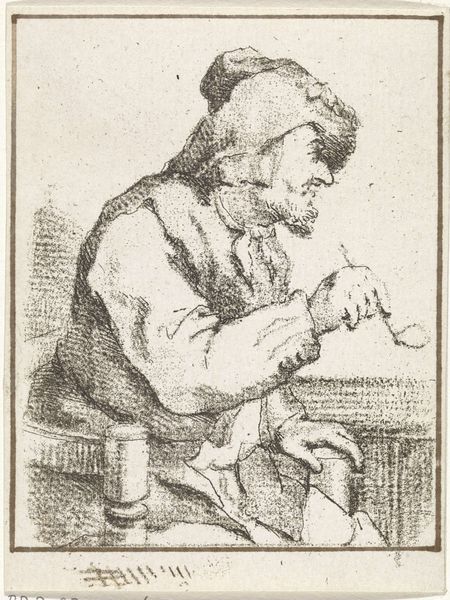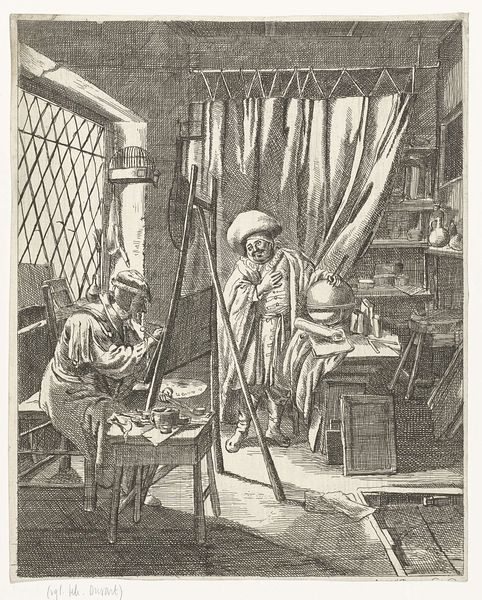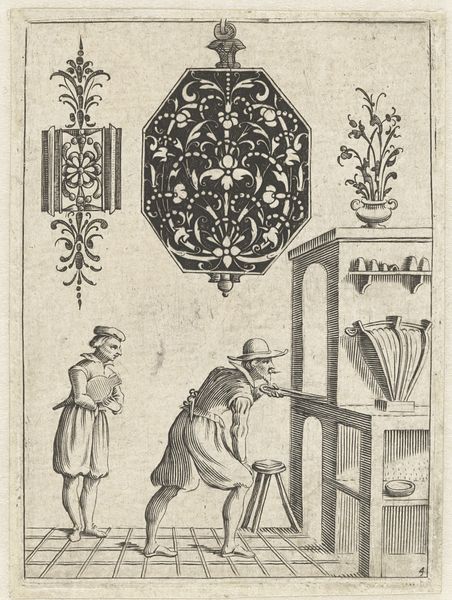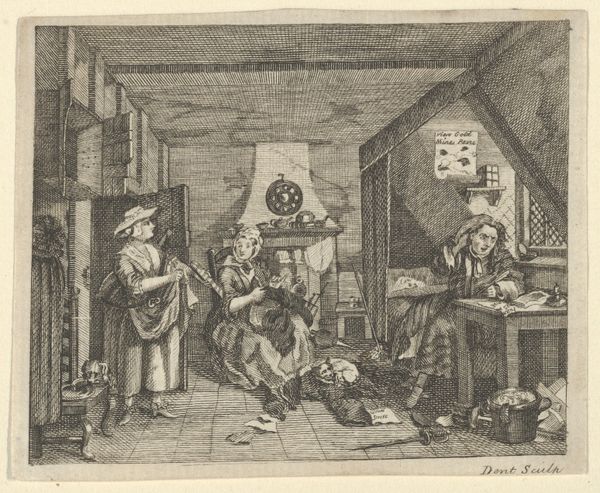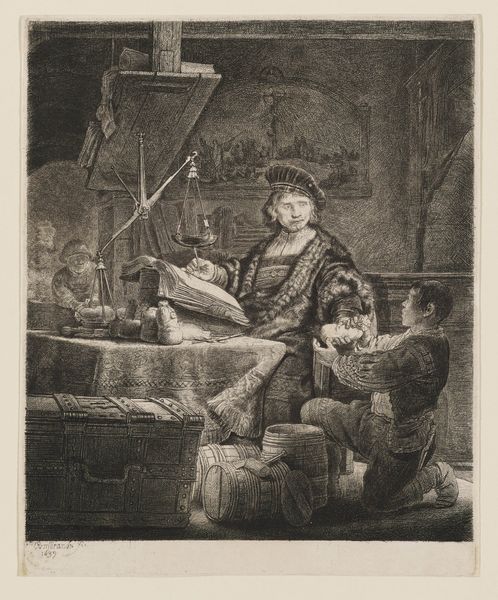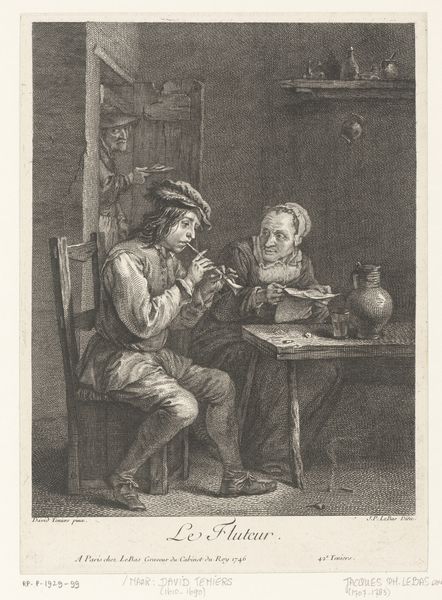
drawing, print, engraving
#
portrait
#
drawing
#
baroque
# print
#
old engraving style
#
sketch book
#
personal sketchbook
#
men
#
genre-painting
#
engraving
Dimensions: Sheet: 10 3/8 × 7 5/16 in. (26.3 × 18.6 cm) Plate: 5 1/2 × 3 5/16 in. (14 × 8.4 cm)
Copyright: Public Domain
Curator: I'm struck immediately by the image’s delicate industriousness, all those lines. Is that all the artist thought art was? I bet he thought all he needed was diligence to be amazing. Editor: That's "A Painter in his Studio," created between 1662 and 1672 by Abraham Bosse. It's an engraving – so, yes, lots of lines are very much the point! You can find this at The Met. It seems like genre painting; in addition to being Baroque it also portrays some portrait-like features of the figure. What does it call up for you? Curator: The labyrinthine detail reminds me of a dreamscape. You're lost in the tools of creation—the easel, the paints, the sketches... But it feels intimate, almost claustrophobic, as if the act of creation is a solitary, self-contained world. All art supplies... No play! I can imagine what he's dreaming of though. Is that landscape a portal? Editor: Interesting take! The studio space itself is rich with symbolism. We have an artist hard at work. A piece with other figures displayed, representing art historical precedent. It suggests both the historical weight and the personal interpretation inherent in artistic practice. The landscape is definitely worth contemplating. In the period when this piece was made, landscape motifs were laden with cultural meaning and values – the natural versus the urban, pastoral utopias, classical mythology… This composition puts a value on all that in artistic creation, right in front of us, next to all the things needed to literally make the art! Curator: He looks quite serious! I would’ve hated to sit so serious while trying to summon the Muse… Did artists of the period think all their supplies, and all the hard work, brought inspiration? Or just something for inspiration to push up against? Editor: It is compelling. It’s like Bosse captured the entire ecosystem of artistic production – the practical tools, the inspiring source material, the nods to the art world past. As an iconographer, I am curious to think about the function the display itself had; what this space communicates! What we’ve been calling symbols must also be working materially. And maybe if the artist knew their own role he could access that. Curator: So we both feel the tension between drudgery and epiphany. You approach it historically, through symbols and context, and I perceive it emotionally – the artist grappling for something beyond mere technique. Still, all those lines...they keep calling to me, as if artmaking were a sort of intricate captivity. Editor: Perhaps the real magic lies in embracing both, allowing each to fuel the other? It all adds to my thinking about the image and my emotional engagement with it.
Comments
No comments
Be the first to comment and join the conversation on the ultimate creative platform.
